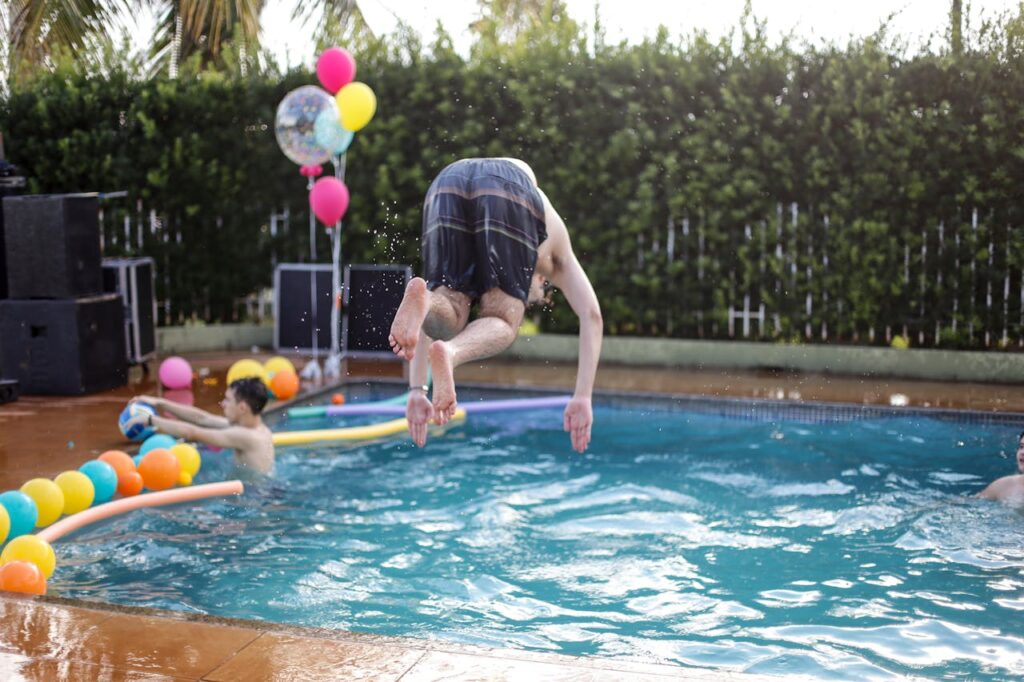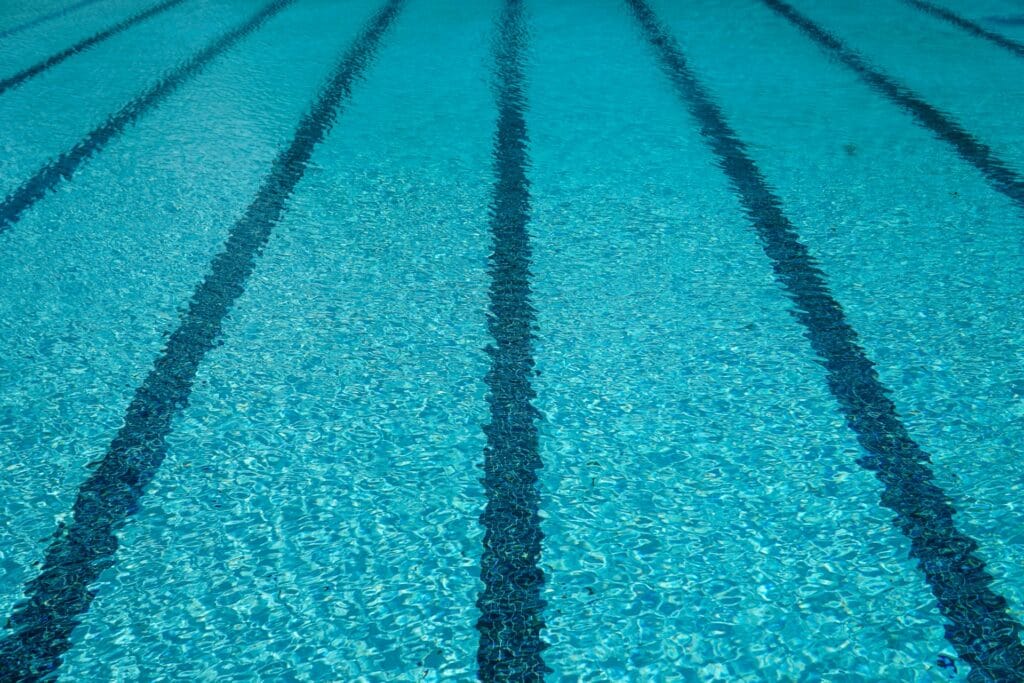Learn about What Is a Good Temperature for Swimming. Ideal swimming temperatures range from 78–82°F, ensuring comfort, safety, and performance. Learn the best temperatures for recreation, competition, therapy, and open water.
Swimming, in any case, is one of the most excellent sporting activities for leisure, health, or fitness purposes or the sake of competition. Of importance is the water temperature, which arguably is one of the major parameters that should be scrutinized for safety, comfort, and performance. One must be acquainted with what temperature is ideal-not only about certain situations but to the individual himself, to make swimming fun in every sense for all.
What Is a Good Temperature for Swimming?
Temperature should be between 78-82 degrees Fahrenheit for best swimming conditions. The water is comfortable, while muscle cramps and fatigue are precluded. The warmer the water, the more relaxed someone is in it; on the contrary, the cooler the water, the better the performance.
It has the perfect optimal temperature range for recreational swimming, training, and aquatic exercise. Swimmers of every level can benefit from that pleasant warmth-chill balance.

Ideal Swimming Temperatures for Different Purposes
Recreational Swimming (78°F – 82°F / 26°C – 28°C)
For swimming to be described as fun, comfort must abound, and temperature is a major contributor to enjoyment: a temperature range of 78-82°F approaches perfection-warm but not hot! The water temperature should keep the body warm but not have that hot, tight feeling that makes a swimmer uncomfortable. Too cold water makes one stiff, and hot water can drain energy from the swimmer.
Competitive Swimming (77°F – 80°F / 25°C – 27°C)
Slightly cooler is what competitive athletes prefer so that they do not overheat when they undergo strenuous training or compete. A temperature range of 77 to 80 F would keep an athlete cool and able to performance that thereby lowers the chances of excessive sweating and possible dehydration. For instance, Olympic pools usually have a temperature of around 79°F26 °C6C) to target endurance and efficiency.
Therapeutic and Rehabilitation Swimming (86°F – 92°F / 30°C – 33°C)
The water temperature must be 86°F to 92°F for muscle relaxation, circulation enhancement, and pain relief in the course of water therapy or joint rehabilitation. Warm water is, therefore, specifically ideal for senior citizens as well as for people with arthritis or mobility limitations.
Infant and Toddler Swimming (85°F – 90°F / 29°C – 32°C)
Keeping in mind that young children are very sensitive to changes in this temperature, the water they swim in ought to be warmer. Somewhere between 85°F and 90°F should present comfort along with preventing heat loss too quickly. Pools built for babies ought to be sufficiently heated since babies also have low fat reserves and would chill rather quickly in cool water.
Open Water Swimming (60°F – 70°F / 15°C – 21°C)
60° to 70°F temperatures are fairly safe for open-water swimming, to some extent, because of exposure to the elements. Cold water swims requiring wetsuits shelter open-water elite from hypothermia while allowing for greater acclimatization. In the case of beginners, caution must therefore be exercised, limiting the time in water at temperatures below 60°F on account of cold-shock response risk.
Cold Water Swimming (Below 60°F / 15°C)
Cold-water swimming can also be referred to as winter swimming, and you ought to prepare well. Nearly all muscle control, as well as hyperventilation after immersion in water, is shock below 60°F. These responses can be countered by getting the right gear, building up slowly your tolerance, and practicing safety so you do not get hypothermia from cold-water swimming.
Factors Affecting Swimming Comfort
1. Personal Tolerance
Depending on their age, health condition, and experience in swimming, individuals tolerate temperatures differently. Children and older swimmers often prefer warmer temperature waters, while advanced swimmers thrive in comparatively cooler circumstances.
2. Duration of Swimming
Longer swims necessitate ideal water temperatures. In such an endeavor, swimming in cool water for a long duration can cause muscular fatigue and cramps, while hot water can pre-condition one for symptoms of heat stress and dehydration.
3. Air Temperature and Humidity
Environmental conditions can play a major role in temperature perception for swimmers. The contrast between air temperature and high humidity makes cold water feel pleasurable, while during the cold winter, hot water feels glorious
4. Wetsuits and Swimwear
Wetsuit swimmers have a relatively lower threshold for temperature because wetsuits trap body heat. Some thin costumes would not sustain heat, so adaptation to temperature is important for open water settings
Safety Considerations for Swimming in Different Temperatures
Cold Water Risks
- Hypothermia: Staying submerged in cold water for extended durations can lower the body temperature to dangerously low levels.
- Cold Shock: Entering super-cold waters causes reflex inhalation, sometimes combined with the small but exponential increase in heart rate, through which the swimmer may die by drowning.
- Muscle Cramps: A cool climate may cause muscle stiffness, thereby increasing the chances of an accident.
Warm Water Risks
- Overheating: Remaining in hot water for extended periods has a great possibility of making one’s body perspire their bodies out and become dehydrated.
- Fatigue: A rise in body temperature leads to fatigue and sluggishness for swimmers.
- Bacterial Growth: Warm water can facilitate the growth of bacteria, thereby exposing them to infections.

FAQs
Is 70°F too cold for swimming?
No, 70 degrees Fahrenheit is usually quite chilly for comfortable swimming. However, prolonged sessions of immersion without thermal protection will cause muscular rigidity, loss of body heat, and discomfort.
Can water above 85°F be dangerous?
Yes, swimming in water temperatures above 85°F will produce overheating, dehydration, and fatigue. Warm water puts a lid on the body’s cooling ability; this makes long swims unsafe-effective. Let us swim one day.
Do indoor and outdoor pools have different temperature needs?
Indoor pools can stay at a slightly lower temperature range (78-82°F), because the indoor environment can keep air temperatures controllable. The temperature of an outdoor pool will depend on many conditions, since there is so much wind and weather that would alter the effects to make water not feel so warm.
Conclusion
Swimming temperature considerations encompass, among others, purposes of swimming, environment, and personal factors. Recreational swimmers are generally fine with temperatures between around 78 and 82 degrees Fahrenheit. Competitive and therapeutic swimmers have their own precise needs.
Concerning cooler temperatures, open water swimming should be avoided, while very young children need temperatures that are much warmer to remain comfortable. Knowledge of and adaptation to different water temperatures make a safe, enjoyable swimming experience for all.
